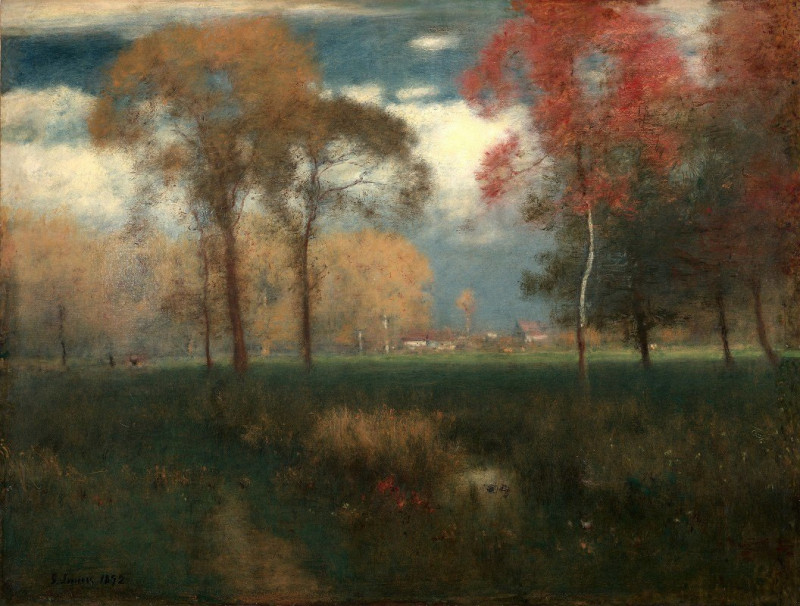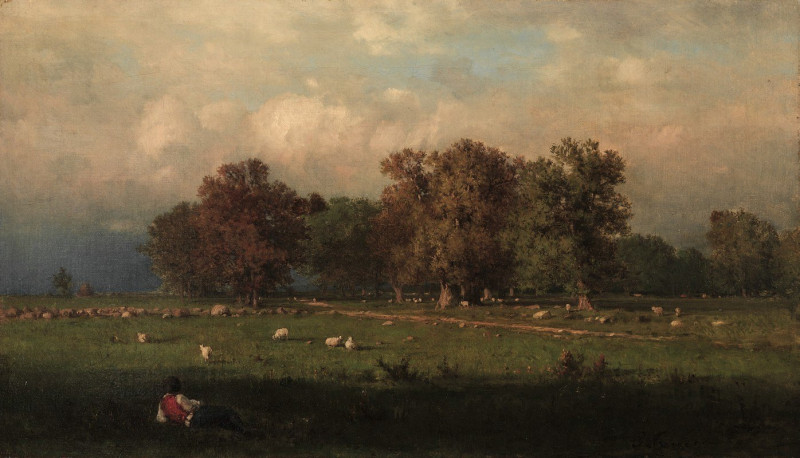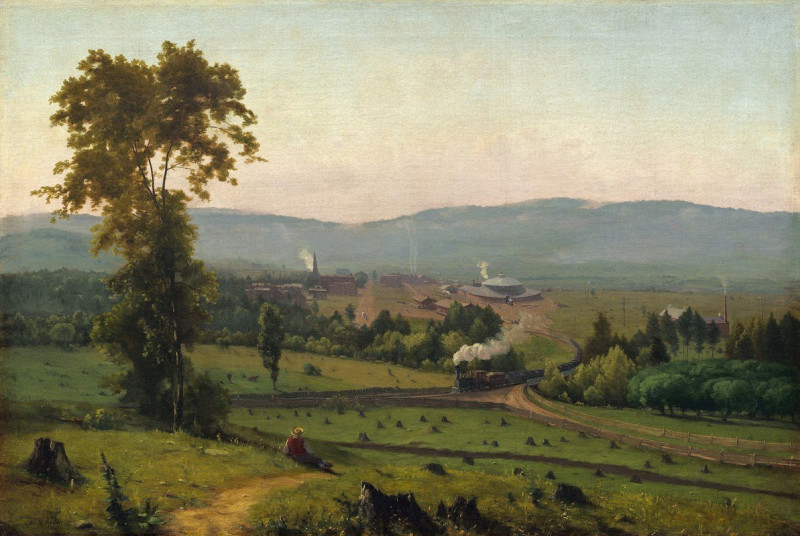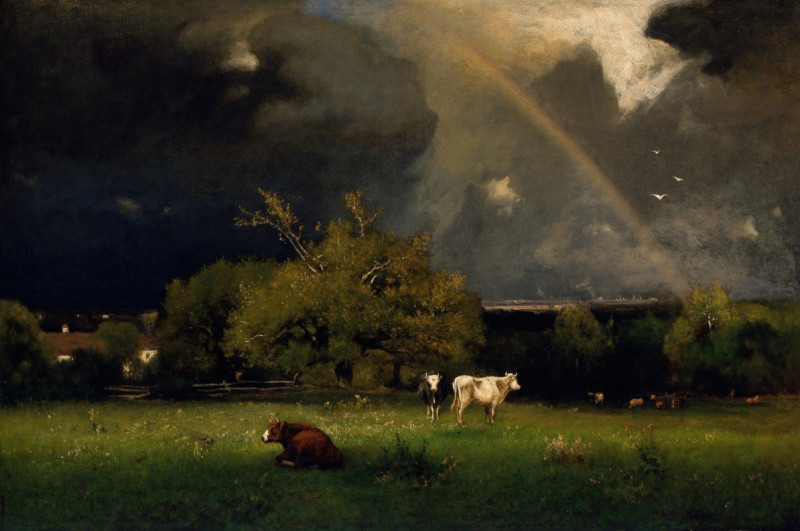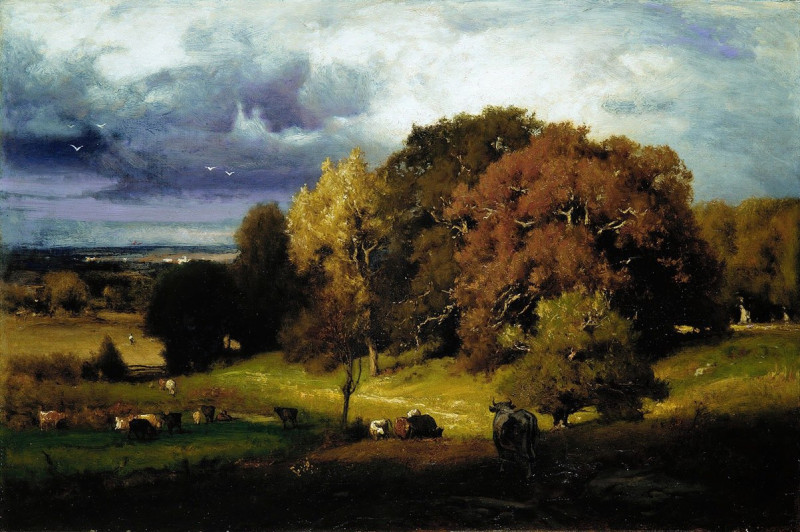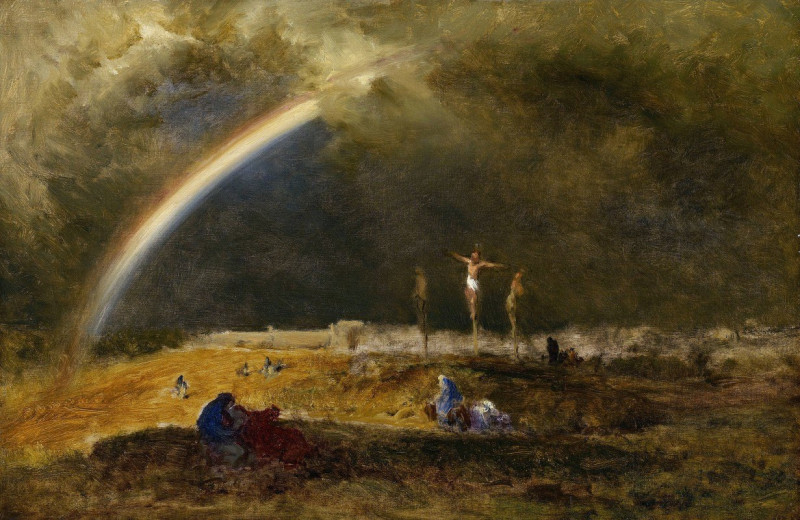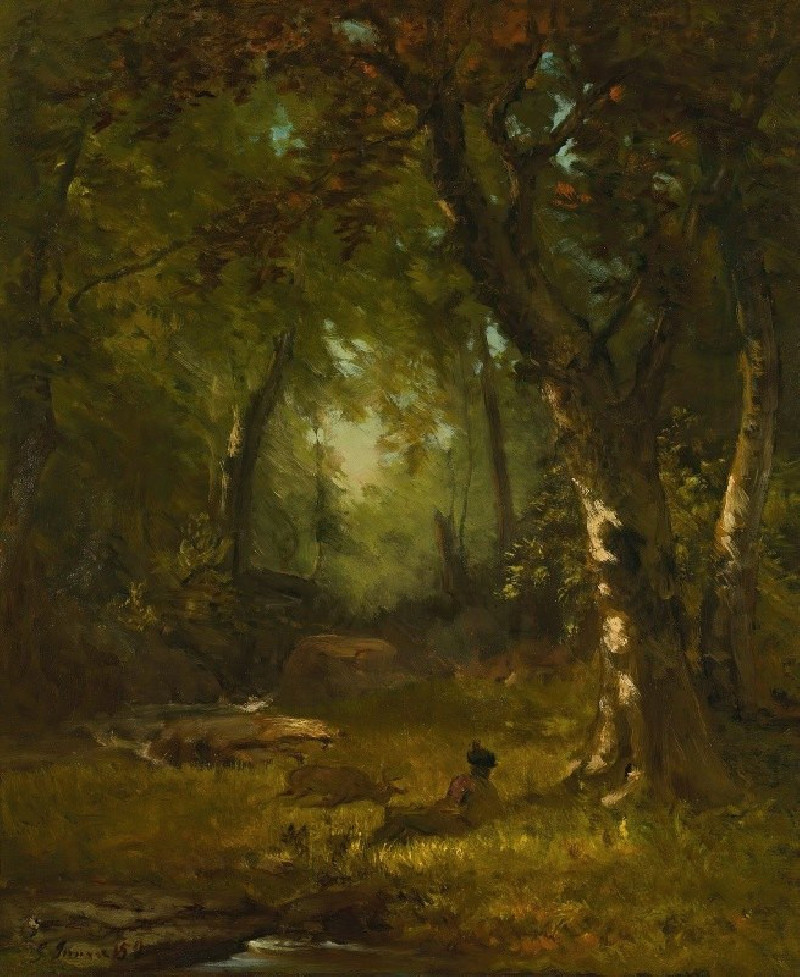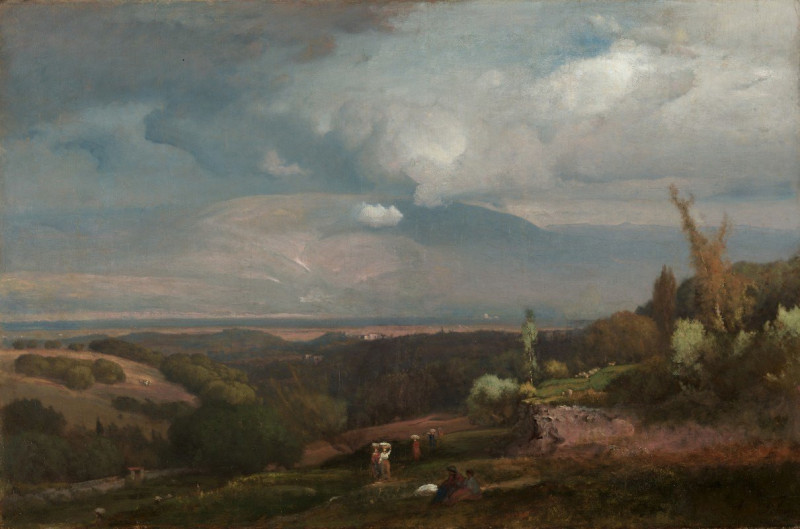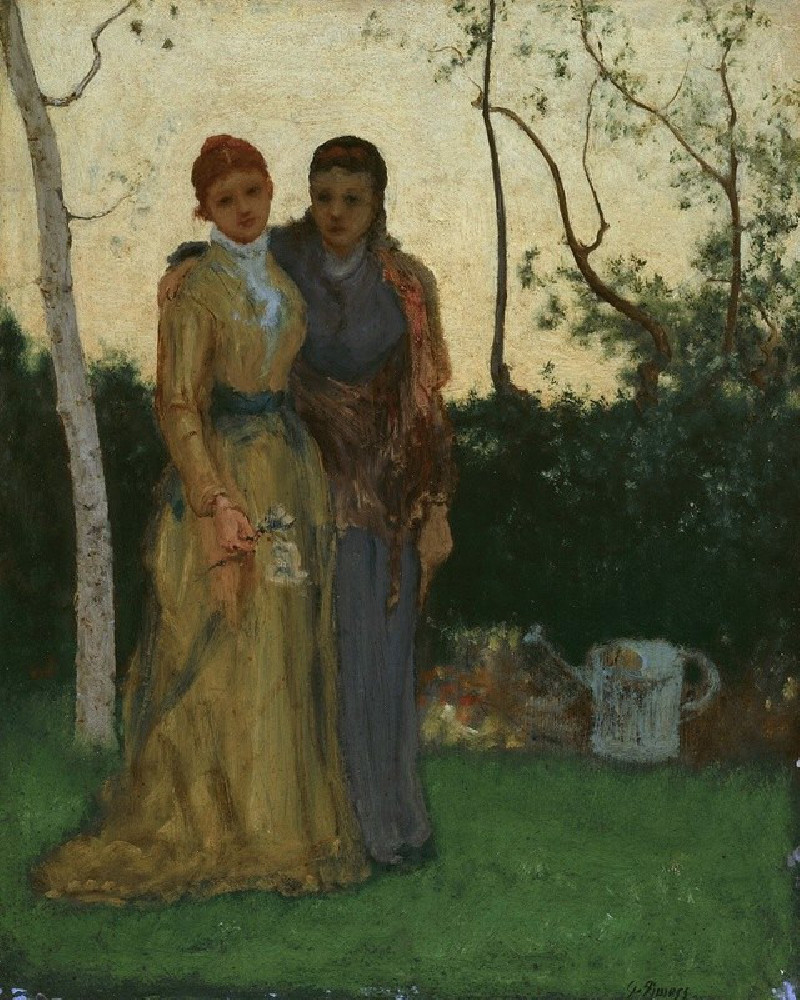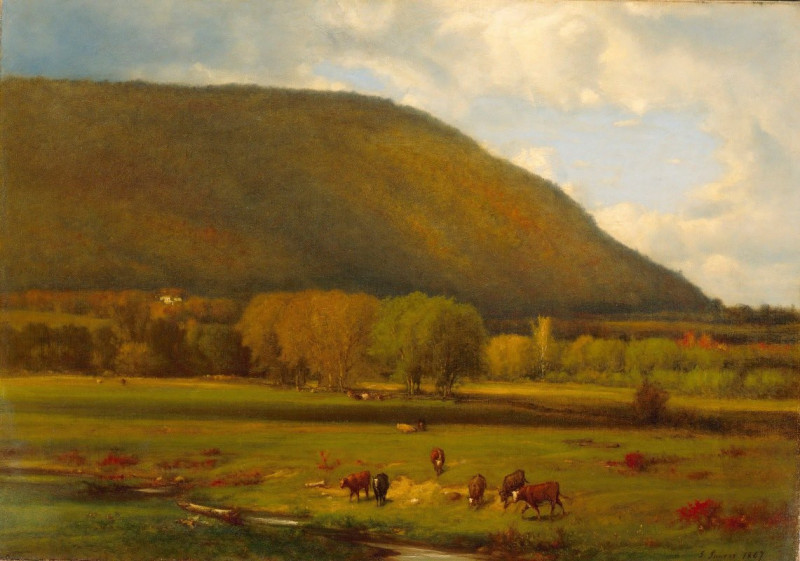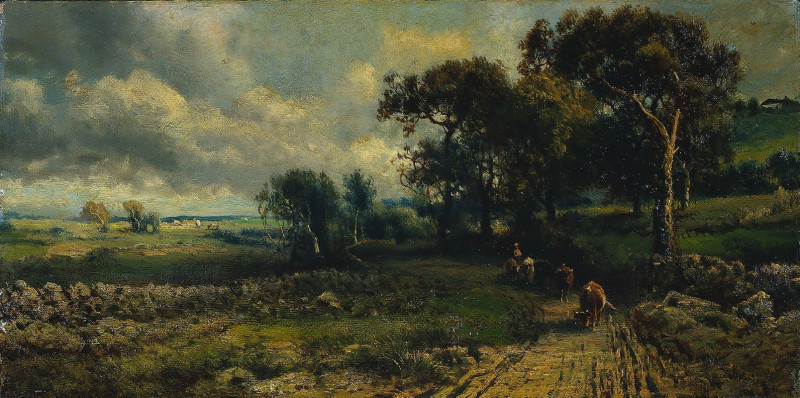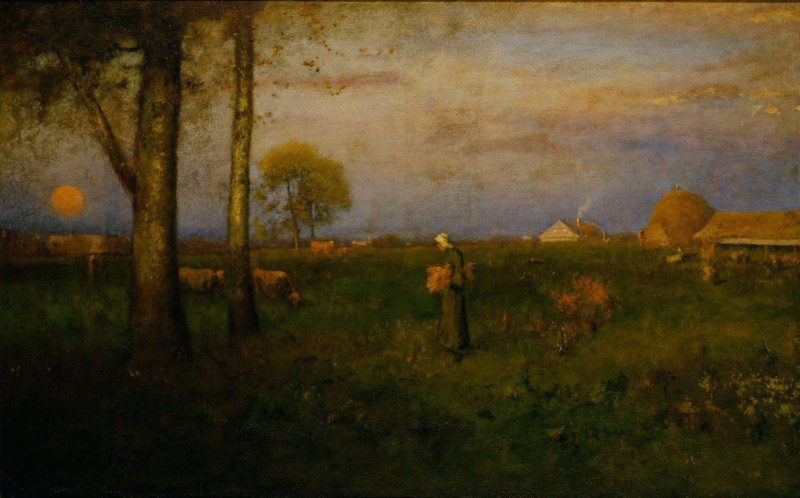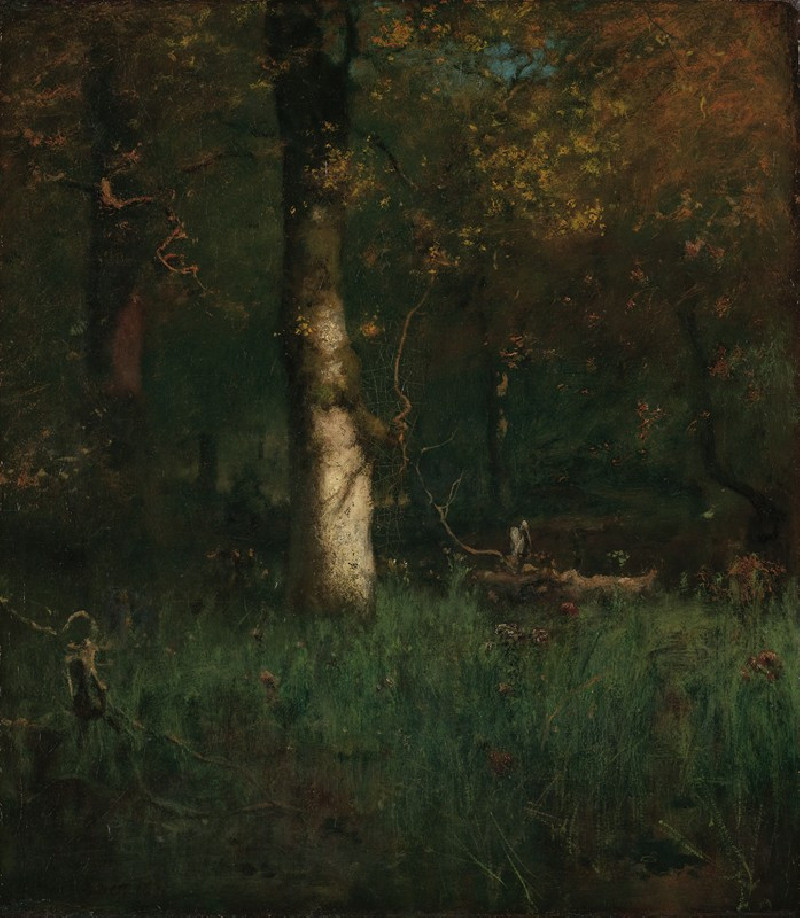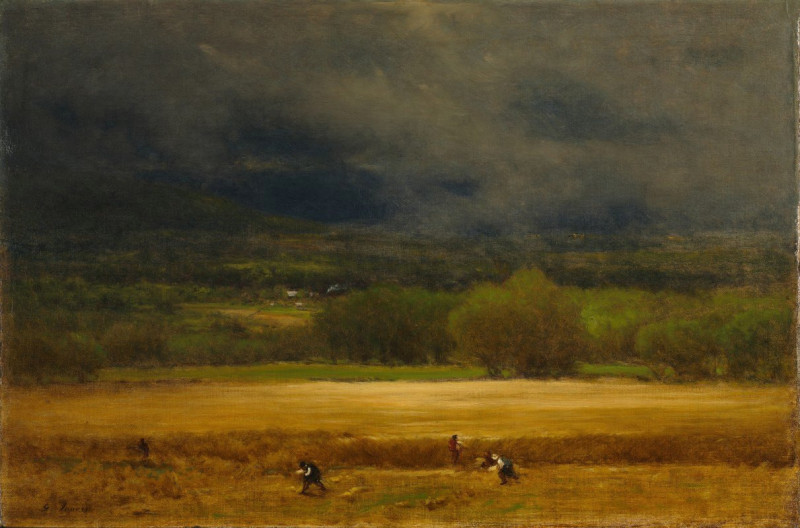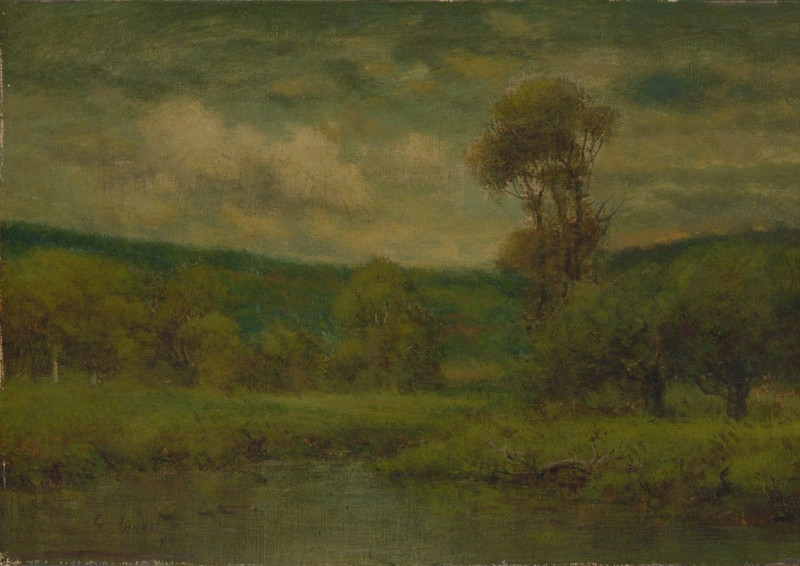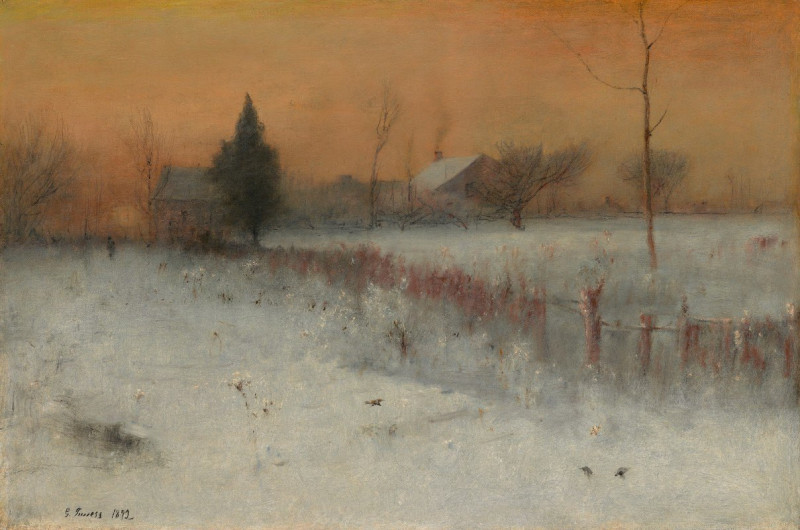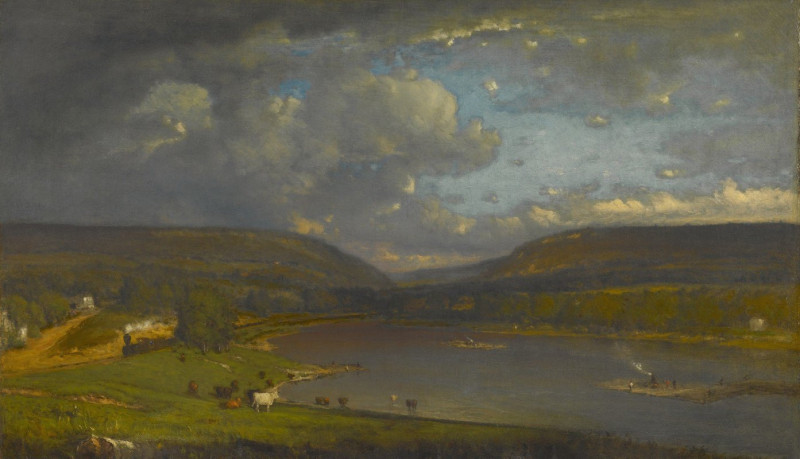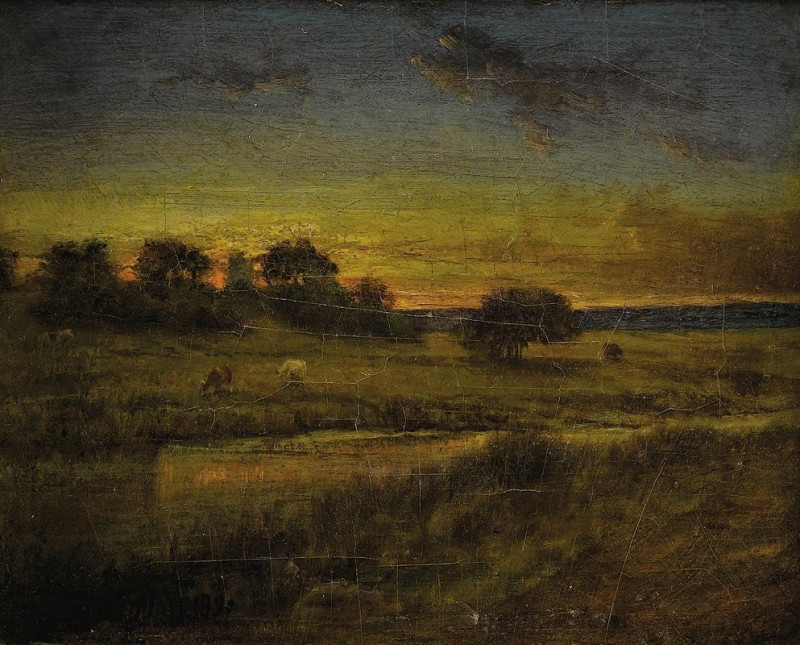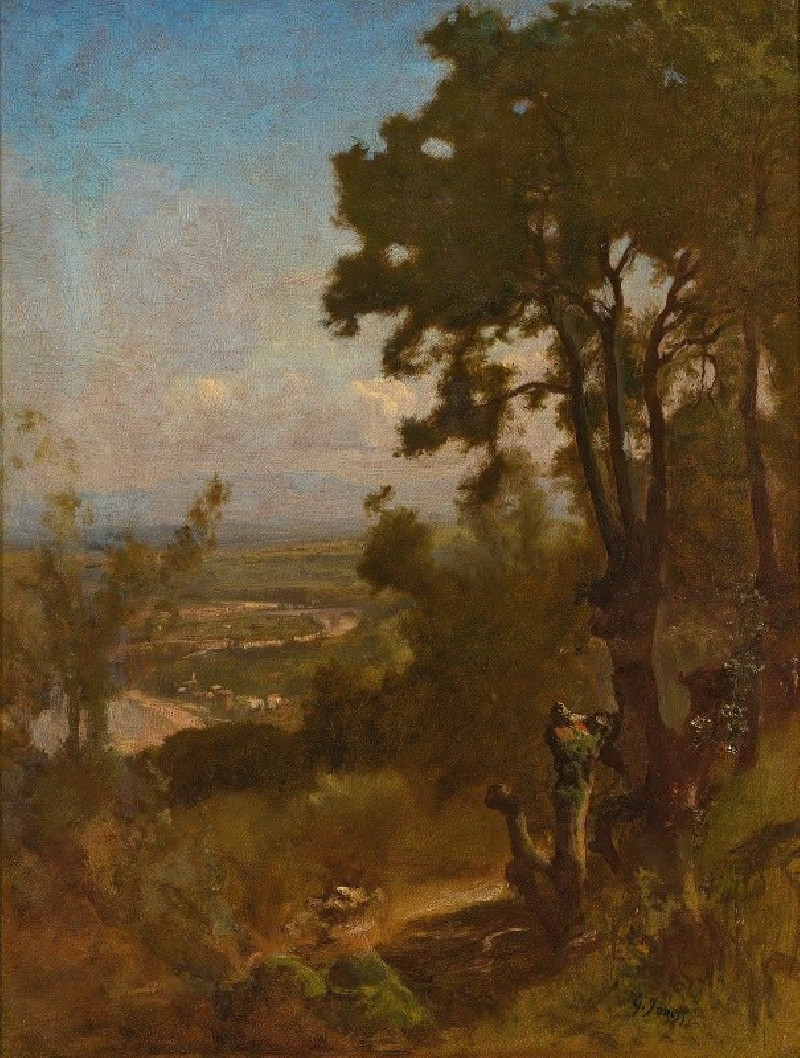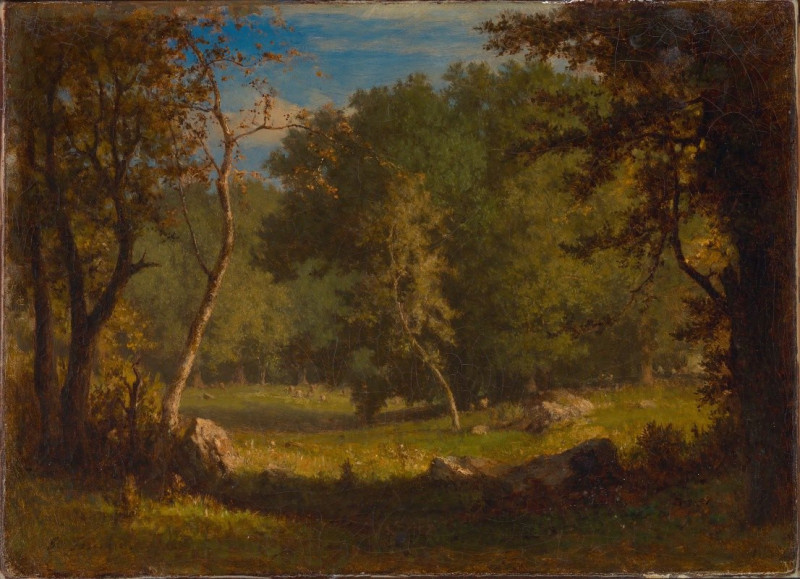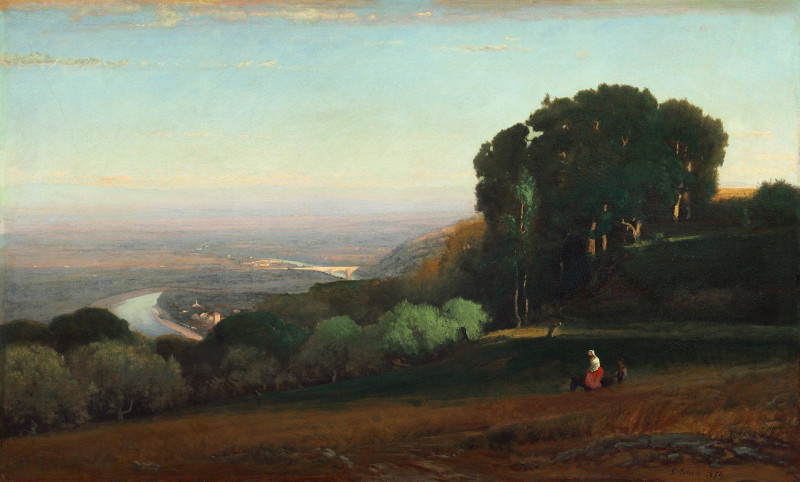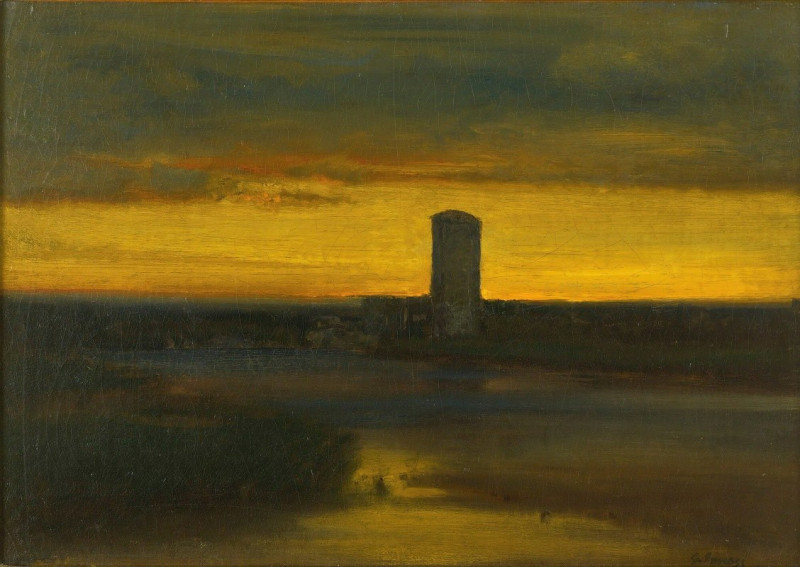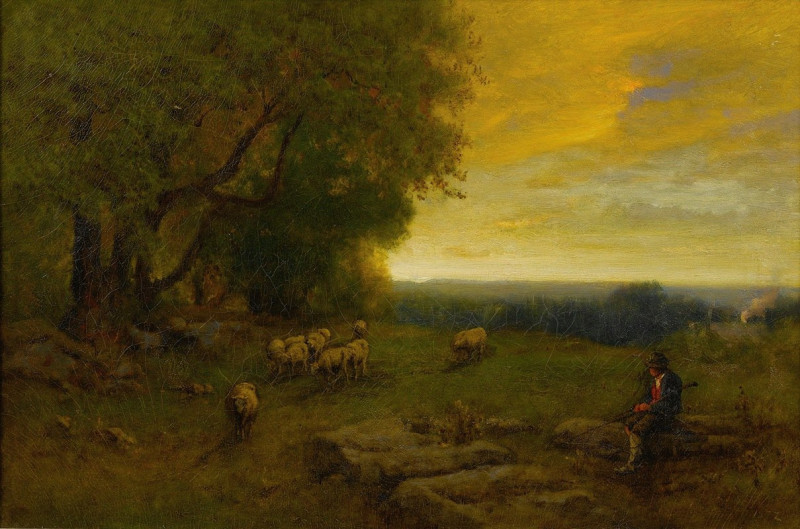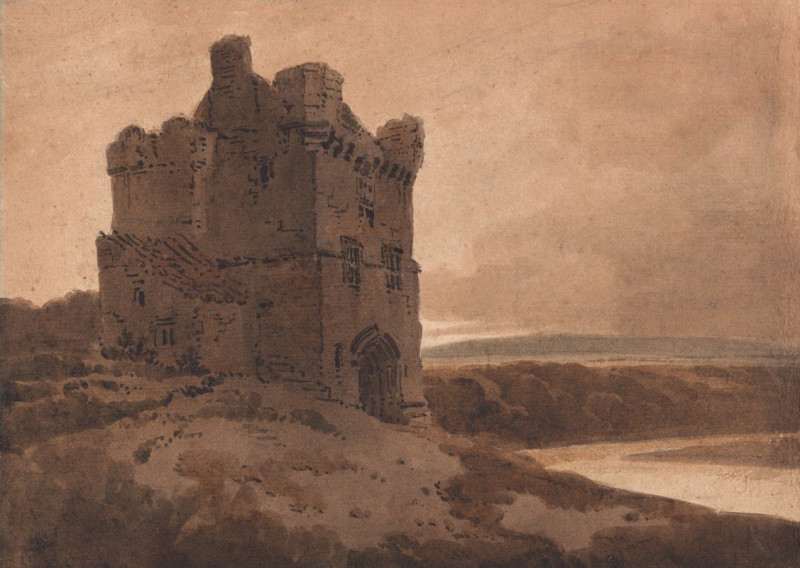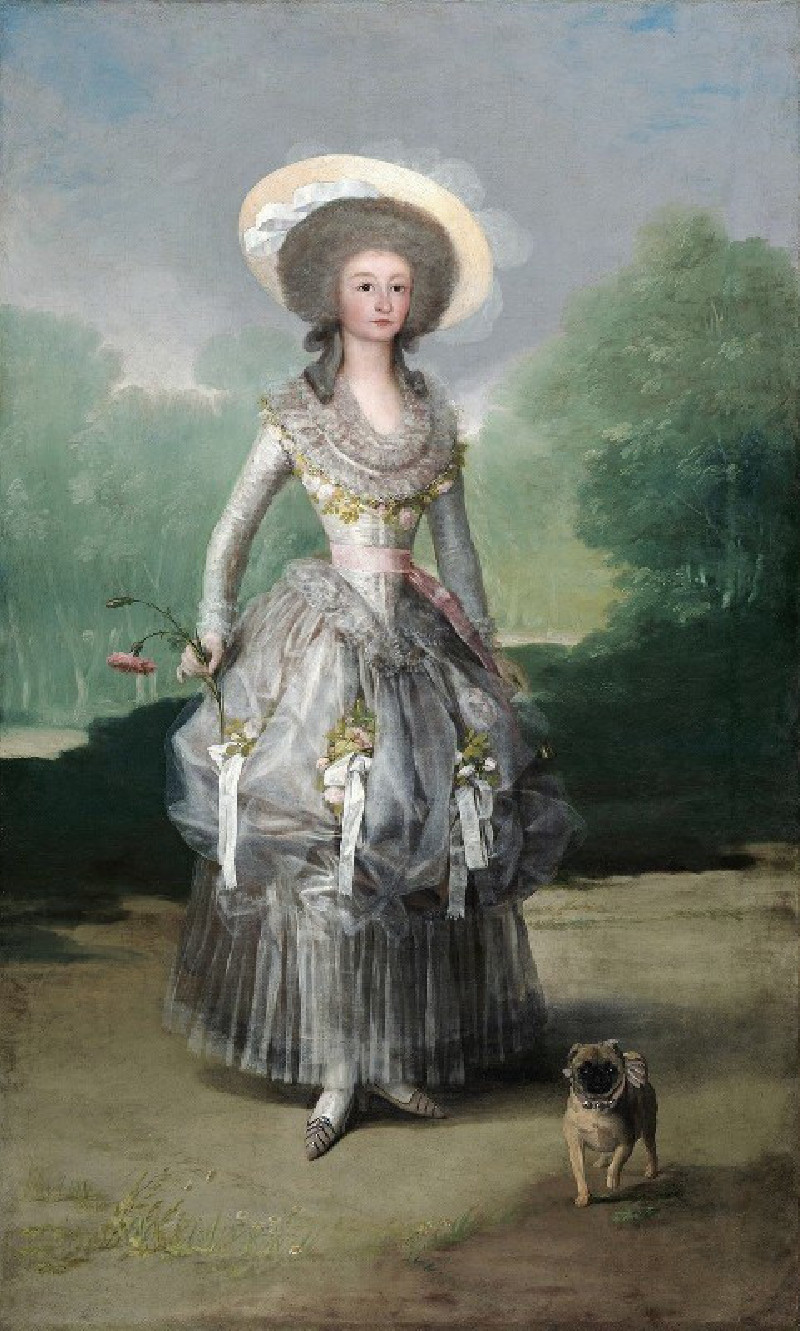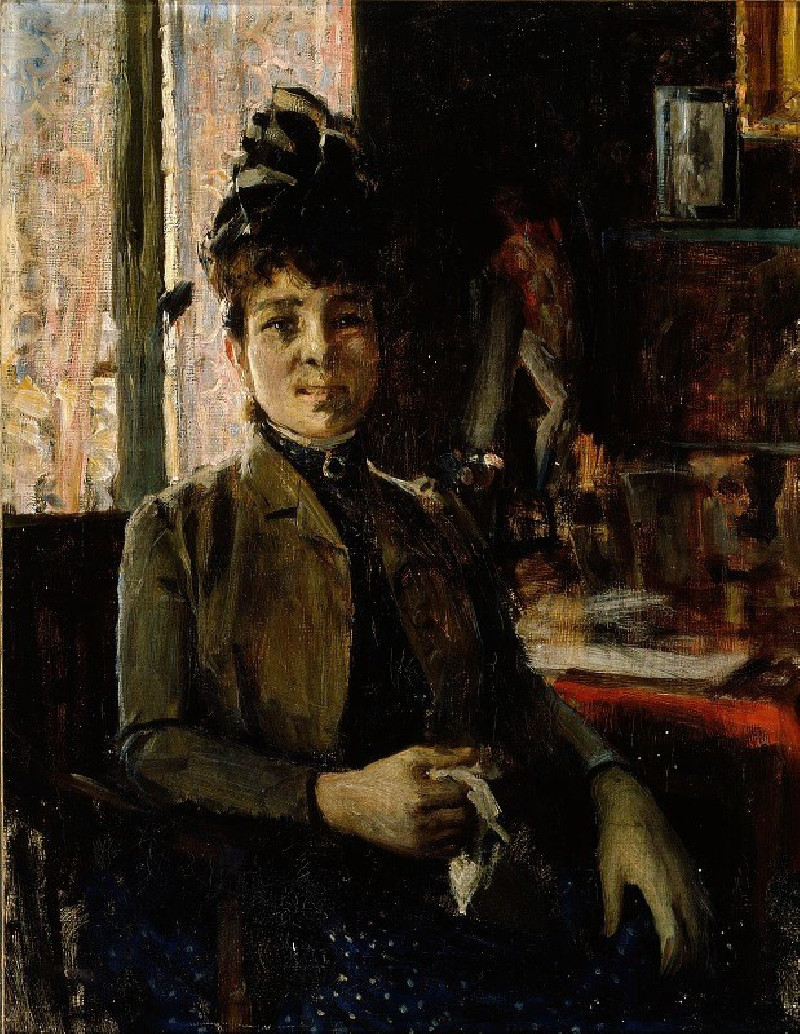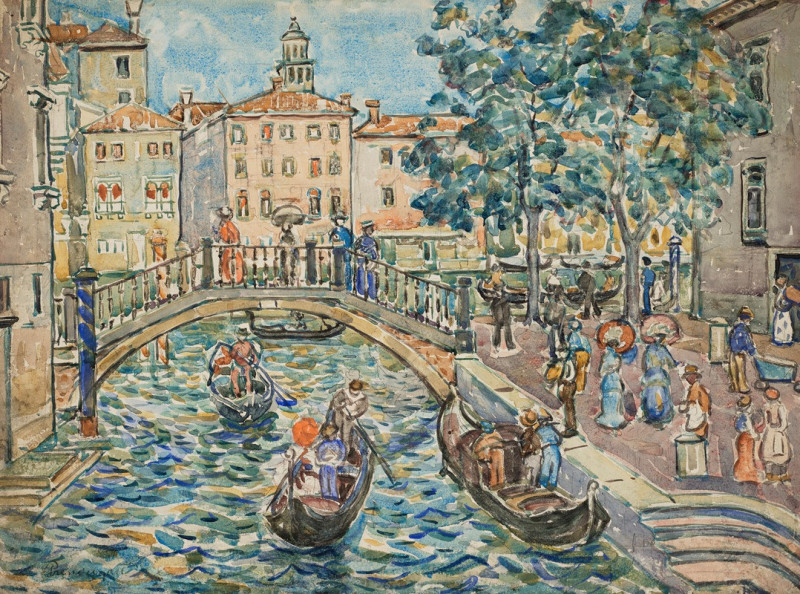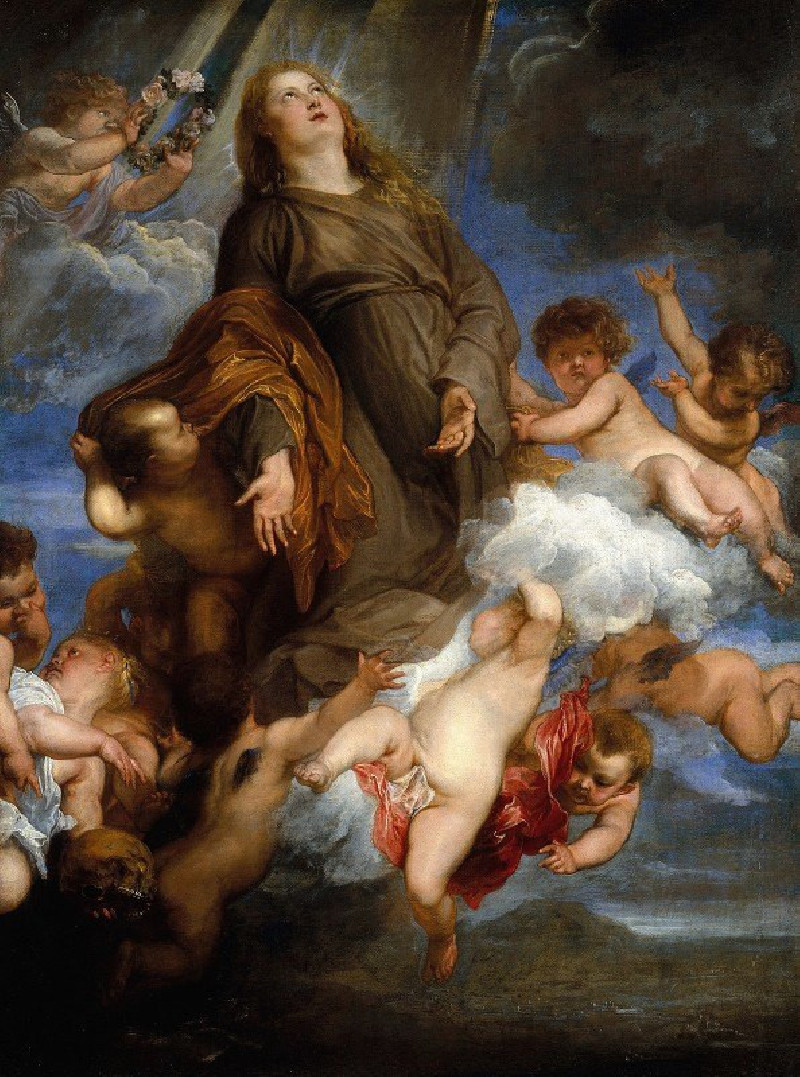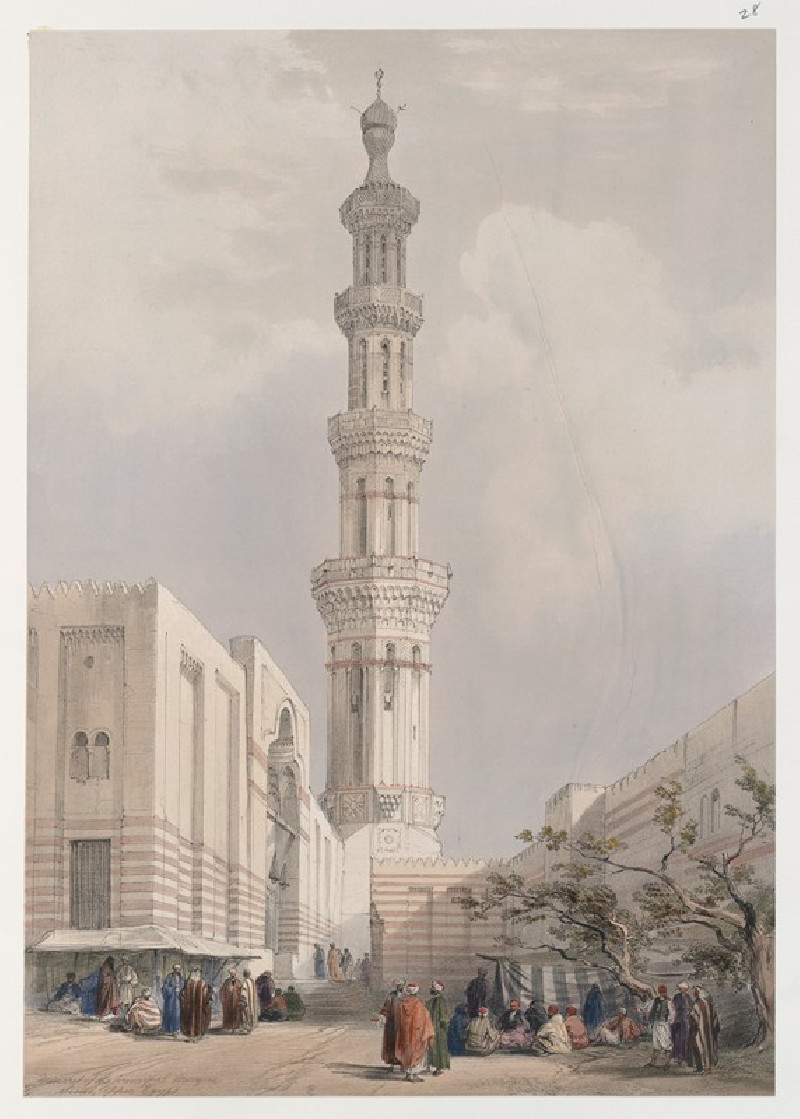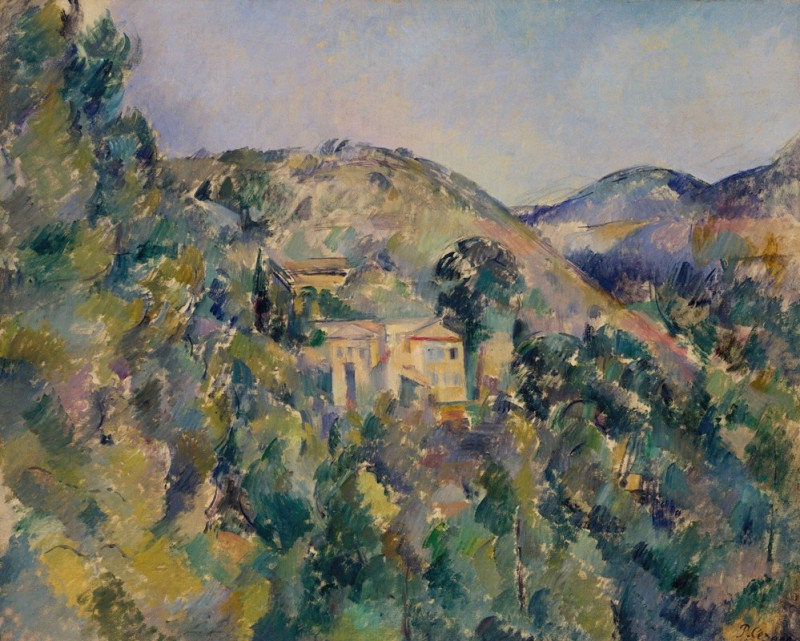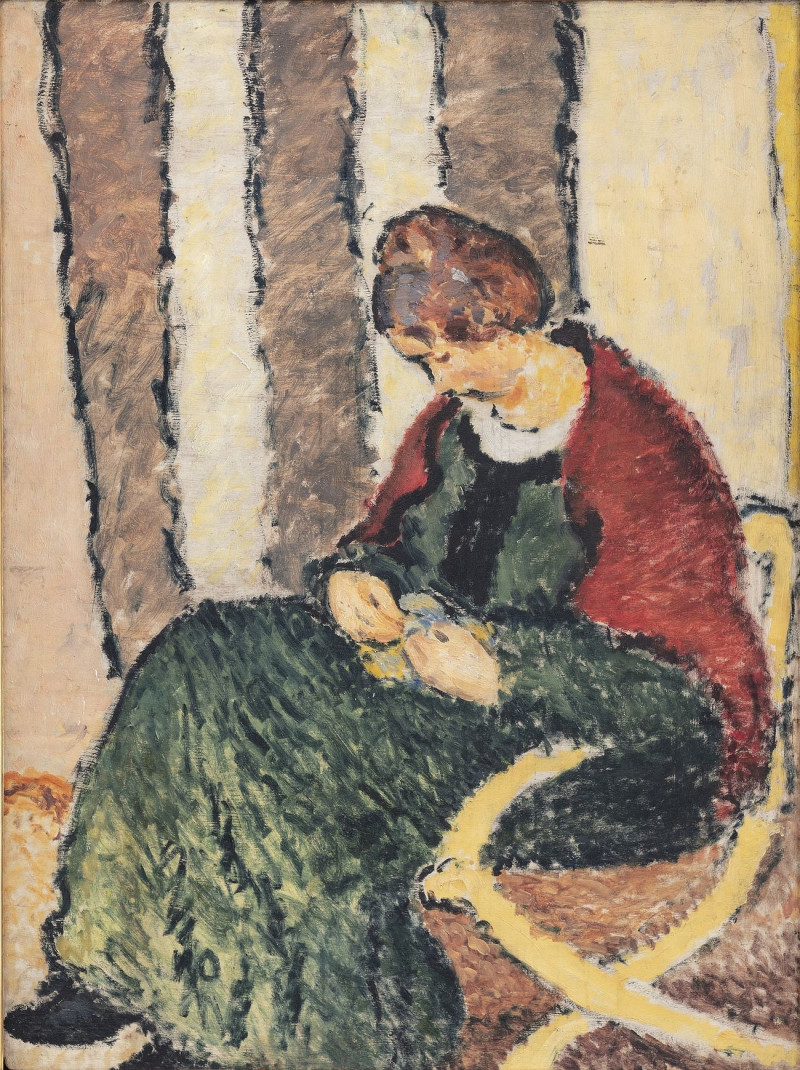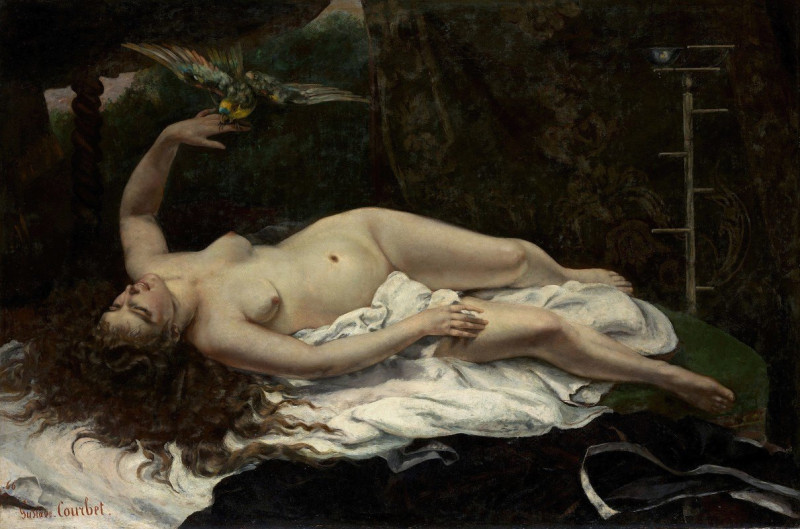The Wood Chopper (1849)
Technique: Giclée quality print
Recommended by our customers
More about this artwork
"The Wood Chopper" by George Inness, painted in 1849, captures a tranquil, pastoral scene infused with the lush depth and serene beauty typical of Inness's landscape works. In this painting, we observe a rustic moment in the American countryside, imbued with a sense of peaceful coexistence between man and nature.The scenic landscape portrays a vast expanse dotted with rolling hills and a serene body of water in the distance, suggesting the vastness of the natural world. Dominating the foreground are robust, full-bodied trees framing the scene with a sense of grandeur and stability. Among these giants, a solitary figure, the wood chopper, stands with an axe beside a felled tree, representing human industry and presence within the natural world.A child sits nearby on a rock, watching the scene unfold or perhaps enjoying the serene environment, adding a touch of gentle humanity to the landscape. This inclusion of figures enhances the narrative quality of the painting, suggesting a story of daily life and survival, yet balanced by the overwhelming calm of the natural setting.The tranquility of the atmosphere is further emphasized by the soft, diffuse light that permeates the canvas, highlighting the artist’s skill in capturing the subtle, changing qualities of light and its effects on the color and texture of the landscape."The Wood Chopper" is not only a depiction of a simple everyday task but also a reflective meditation on the harmony between human activity and the natural world, rendered with the delicate interplay of light and shade that George Inness is celebrated for.
Delivery
Returns
George Inness (May 1, 1825 – August 3, 1894) was a prominent American landscape painter.
Now recognized as one of the most influential American artists of the nineteenth century, Inness was influenced by the Hudson River School at the start of his career. He also studied the Old Masters, and artists of the Barbizon school during later trips to Europe. There he was introduced to the theology of Emanuel Swedenborg, which was significant for him; he expressed that spiritualism in the works of his maturity (1879–1894).


